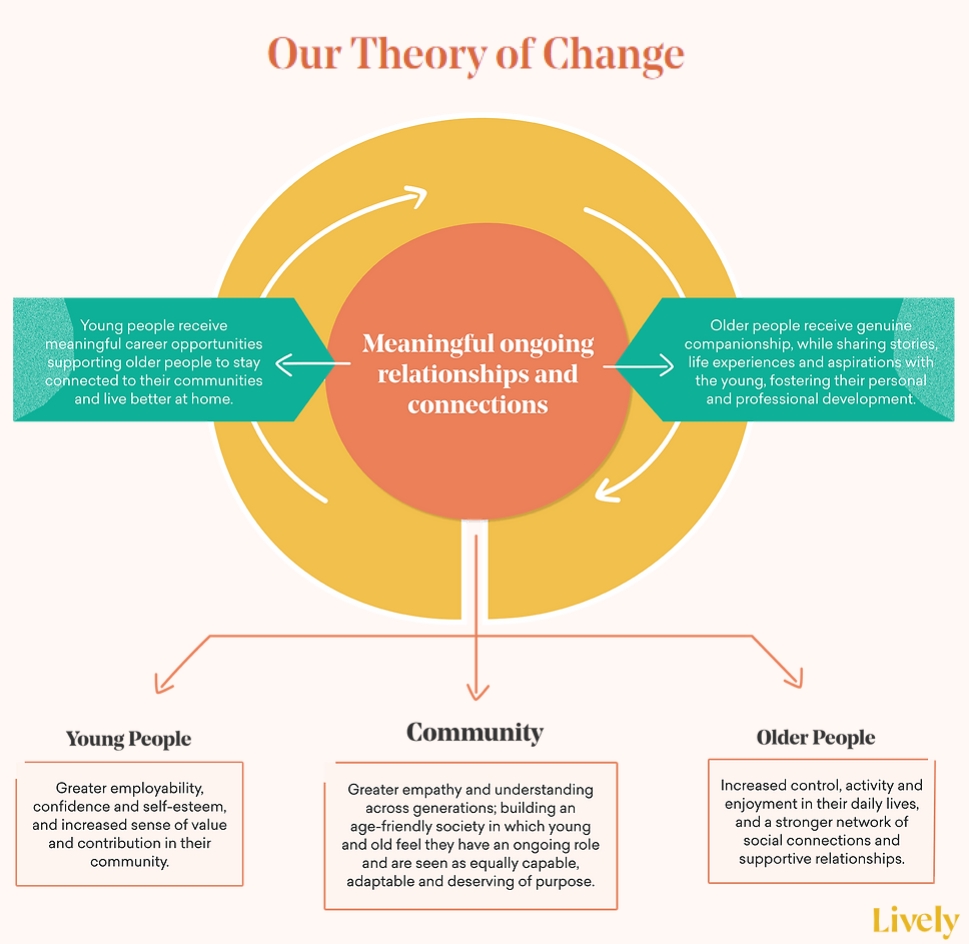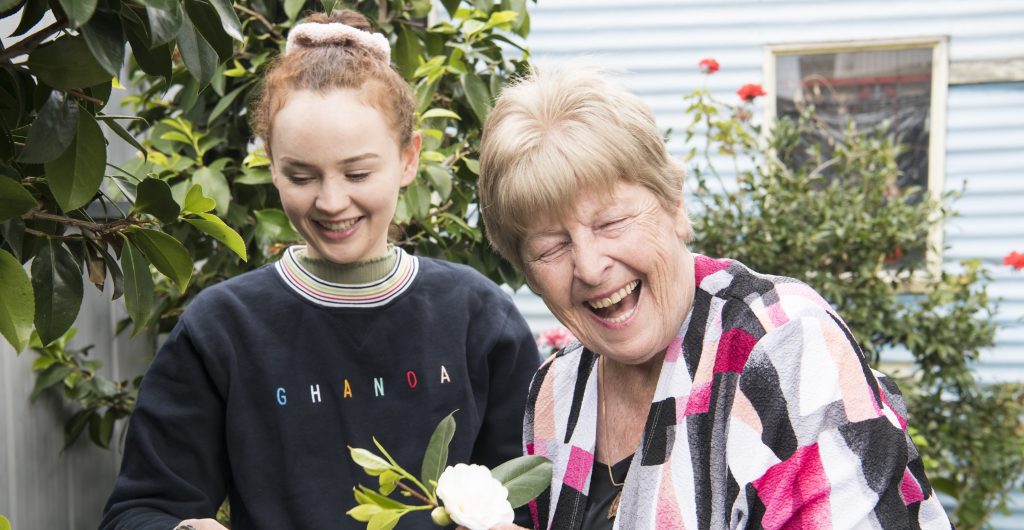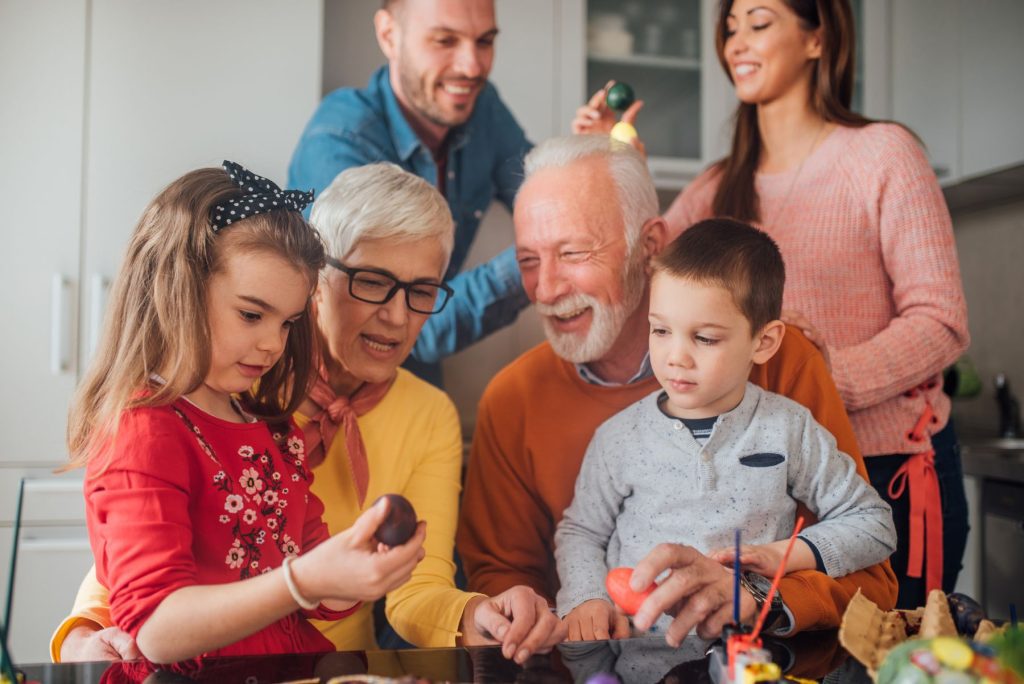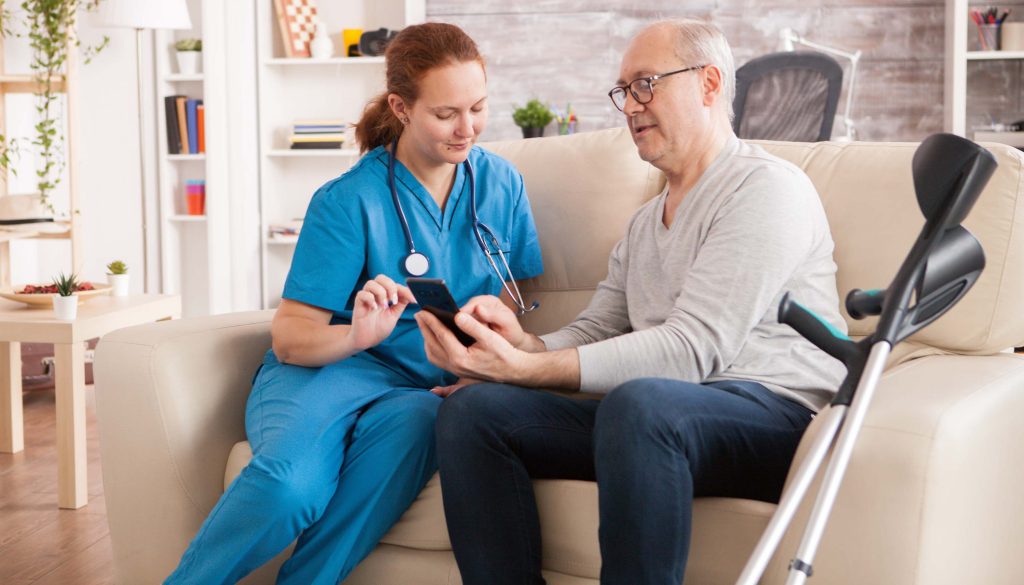Jump to: Anna’s Advice | Relevant Tools
Social isolation and loneliness – an important part of re-imagining ageing?
As we age, many of our relationships age with us. This can be our children becoming adults and moving away. It can be parents or romantic partners passing away. And it can be friends and siblings passing away. Accessibility to social interaction also plays a big part. As we become older we may have less energy to go out and see people, less physical ability to get out and about, or no longer being able to drive a car and travel far.
Internationally, there have been many studies in the past decade to understand the effect social isolation and loneliness have on physical health and mental wellbeing. The Australian Institute of Health and Welfare (AIWH) reports that “Social isolation and loneliness can be harmful to both mental and physical health. They are considered substantial health and wellbeing issues in Australia because of the impact they have on peoples’ lives.”
For some older people, social isolation may look like only seeing a home support person all week. Or the majority of their social interactions are talking to workers at the supermarket and other paid service assistants. These are short and superficial interactions, lacking depth or enrichment.
Thankfully, through Lively, Anna Donaldson has re-imagined a better social model to walk towards.
Lived experience: inspiring the concept of Lively
When Anna was 21 years old she was connected with an older woman, Patricia, who wanted to write her autobiography. The writing project was a big goal, with the intent of publishing. So, Anna volunteered to help Patricia write her life story.
Incredibly isolated at this stage in her life, Patricia was completely housebound and with no family around. She shared with Anna her story of a fulfilling life. While deeply enriched by this, Anna was also confronted by this incredible person’s life ending in loneliness and isolation.
Anna reflects that the experience was “really rewarding and great in a lot of ways, but also very challenging. It was really only me who knew her in a meaningful way towards the end of her life. So I ended up visiting her for a long time”.
After Patricia passed away, their profound connection undoubtedly sat with Anna. While difficult to fully convey in words, she shares “I think it was that, all of a sudden, my ears had been pricked to this issue. This loneliness and isolation while growing older had never previously been on my radar.”
So, Anna was inspired to find a way for older people to avoid ending up in the situation Patricia did.
What do social isolation and youth unemployment have in common?
Before Anna started Lively, she was just out of Uni. She says “I was laser focused on some kind of international development career path. But I started doing some volunteering on the side as a life story writer for an aged care provider. I gravitated to this as growing up I had close relationships with older people in my life. They were very positive and important as role models. So I have an appreciation for what I gained from spending time with older people and hearing about their lives”, she explains.
Seeing Patricia’s lonely end-of-life situation, Anna started to research just how common this experience actually was. At the time, she learned that 4 in 10 older people report feeling lonely and isolated in their day-to-day life. She adds “and that’s just the 4 in 10 who are willing to acknowledge it. The research suggests it’s probably much higher than that. Many people don’t like to admit that they’re lonely, or don’t have many people around”.
Meanwhile, Anna also had many frustrations around youth employment. She had witnessed the catch-22 situation for a young person starting out and trying to get some kind of meaningful work in the world.
Anna remembers that “it was difficult to find paid work opportunities that were values-aligned. All of the roles actually making a contribution in the community required five-plus years of experience. And it was like, ‘well how do you get experience when entry-level options were mainly just retail, hospitality and office jobs? Or, required more training and study?’. I couldn’t see any roles with direct impact being created for young people at an entry-level”.
She couldn’t stop thinking about this catch-22 conundrum. Then one day “I just had this incredible lightbulb moment. I saw a way that social connection for older people and meaningful employment for young people could come together”, Anna remembers.
She envisioned a service employing young people to help older people stay connected. And it would naturally build those intergenerational relationships through the process.
And so, the basis of Lively was born…
[Image source: Lively website]
What steps did Anna take to develop Lively?
The development of Lively has been almost a nine year process now. Anna had the initial idea in late 2014. She says “then there were four years of basically just trying to work it out. As in ‘what would this actually look like? How would it work?’ or ‘how would it get started?’. From there, it has been about five years of actually doing it. Then reflecting, iterating, and eventually ‘consolidating’ everything.”
Learning from others in a similar space
1. EXPLORING THE IDEA:
“The first period for me was, ‘okay, I’ve got this idea I want to provide: employ young people to provide social support and connection to older people’. That’s what it felt like I needed to do. And I was going out there talking to people and getting coffee with whoever I could. People who were in relevant spaces to give me feedback. They supported me to identify ‘what are the actual needs?’, ‘where are the gaps?’. Essentially, ‘what would this service need to look like?’”, Anna explains.
2. DEFINING THE NEED:
Throughout this organic research process, Anna gained some crucial findings: “it was mostly conversations really, and some desktop research. And looking at what’s out there in the world. I got to the point of realising ‘okay, for this to work well it needs to feel dignified’. Through my research and the feedback that I was getting from people, certain aspects became very clear. For older people to be onboard with this, there needed to be practical activities or services being provided. And the social support would occur organically around that, rather than being ‘the service’ itself”. This conclusion also aligned with Anna’s experience of providing a biography writing service to Patricia.
Using technology as a positive entry point
3. DEVELOPING THE IDEA AND FINDING A NICHE:
Anna now understood she couldn’t just go out there and say ‘Hi, we’re here to provide social support’. So she says her next stage in the process was, “okay, there is an important need for this service. But what concrete activities will the service actually offer? I was ultimately inspired by a program in the United States that was providing intergenerational technology help. It was something I came across during this development process, and realised ‘okay, this is a starting point’”.
And so far everything was indicating a gap in the market for a similar concept here in Australia. Anna now felt confident the initial focus of Lively would be technology support and digital literacy training for older people. As far as what young people would have to offer, it felt like a no-brainer to bring in their technology competency. So that’s where the service offering for Lively started.
Codesign, measuring impact and reiteration
4. PILOT PROGRAM & TESTING:
Anna says, “But then, I had three years or so of essentially piloting, testing and co-designing different tech help program models. We worked with both young and older people around how the service should look. Should it be in the older person’s home? Should it be in a dedicated centre? How does it work? If we do a group program, what common needs and wants do older people have? And ultimately, what training would the young people need in order to deliver that?”.
5. FEEDBACK & ANALYSIS:
“There was a whole period of exploring everything closely with the young and older people themselves. Our aim was to figure out how it all needed to look. And from an initial entry point of technology support, interesting feedback started to emerge. I received input from older people and partners that I was connected to, and other people that were getting involved in Lively in various ways.
The common theme was that ‘there’s other stuff out here as well, that’s missing in the space.’ And personally, I had always felt that Lively would develop into much more than just technology help”, Anna says.
6. REITERATION, GROWTH & EVOLUTION:
Anna then decided Lively would repeat the development cycle, launching a new codesign process in 2019.
She says “we went back out to young and older people, asking how else these intergenerational connections could be supporting each other. And that led us to introduce the wider range of activities that Lively is now known for. We started a home care service, while continuing our workshops for technology and other topics. And so, the Lively of the present day has morphed and evolved gradually from the start of 2020, to now”.
Lively’s ‘Design Thinking’ approach using codesign and reiteration is non-linear and always ongoing. Anna says, “we do a lot of workshops, feedback facilitation and codesign with both young and older people. And we speak to both people we are already working with as well as newcomers. We’re asking ‘Okay, what’s working, what’s not, what do we need to tweak, what’s the impact, where should this be heading next’ and so on”.
All of this design process has really been baked into how Lively operates. Anna shares “while we feel there’s likely more we can be developing in the future, we also feel really good about what we’re doing now. Lively’s service is meeting real needs in a distinctive way, and both young and older people are loving it. But it has taken a long time to get through the process of actually landing here.”
What does Lively look like today?
Lively trains and employs young people (18 to 25 years old) to provide both in-home and community-based programs. The in-home support service matches helpers that are a good fit to an older person. They will then visit regularly for anything from basic help around the home, in the garden, with technology, transport, and getting out and about. This includes going on outings, and pursuing all sorts of personal projects or interests. And within all of these activities, Helpers deliver meaningful and needed social support. Wherever possible, young Helpers are ‘doing with’ rather than ‘doing for’ their older Members – supporting older people to maintain maximum capacity and independence, while also ensuring that they have plenty of time to chat, connect and learn from one another.
The services aim to support the widest variety of tasks possible that may be important to an older person. They are designed to support older people in maintaining a sense of social connectedness, while engaging in what matters to them. Lively wants to ensure a future for older people that provides joy and colour in their lives. Alongside this, prioritising the ability to live comfortably and independently at home as long as possible.
What big picture challenges is Lively addressing?
Social isolation for older Australians
The ‘Australia’s welfare 2023: data insights’ report by Australian Institute of Health and Welfare (AIHW) states that “The frequency of social contact, which may include both in-person and online contact, has been declining across all age groups in Australia for decades.”
Younger generations are using technology more and more to stay connected. However, there are many people of any age who feel unable or uncomfortable to integrate digital communication in this way. For this group of people in the digital divide, there is a tendency to become more socially isolated. So difficulty in using technology can often create social barriers for older people.
Empowering older people to integrate communication through technology into their lives is an important tool for Lively’s mission. However, Anna also wants to avoid a tech-heavy approach that replaces the opportunity for in-person connection.
She shares that “I do feel that most of the innovation that I see in the ‘aged care’ space centres around technology solutions. And they tend to be focused on reducing the need for in-person support to be part of the equation. I definitely think these solutions have their place, however, not as a replacement for meaningful relationships”.
The industrialisation of aged care in Australia
From the beginning, Anna could clearly see issues with professional service systems available to older people in Australia. And the more she explored this and talked to people about it, the more challenges became apparent to her.
Professional service systems in Australia (and most of the Western world) are ultimately very transactional models of care. Often, this can look like support people coming in and out, with different people turning up on the door every other day. Many will have a tightly bound plan for the support they’re able to offer, which often prioritises clinical and physical care to the exclusion of broader social and emotional support.
Anna adds “I will acknowledge that this is inherently a white, Western issue. Most indigenous and many multicultural communities are still really great at centering, valuing and caring for their elders. But the dominant white culture in Australia subscribes to an industrial and commercialised model of care”.
This industrialised approach is very flawed, and exacerbates the challenges being experienced by older people.
Ageism and the undervaluation of older people
Over the years of Lively’s development, Anna realised more and more that “the challenges in the ‘aged care industry’ were just the tip of the iceberg. In the past century we have seen the fragmentation of community and family structures. And it’s these that have traditionally ensured older people were supported and stayed connected”.
Anna also saw how changing times had perpetuated a widespread attitude of ageism. So for Lively’s development, themes surrounding ageism felt like something that needed to be addressed. She shares “I think what I became more and more conscious of is that underpinning all of the challenges was a culture that undervalues older people”.
Lively’s codesign approach has meant asking older people what it is they want, every step of the way. The result is a support service that is mutually respectful, with ‘two-way mentoring’ between young and old. Through fostering meaningful intergenerational relationships, Lively also aims to change young people’s attitudes towards older people, so that they go forward in life with heightened awareness and respect for older people, and contribute to cultural change.
Cultural & generational changes to care frameworks
The two aspects of fragmented familial relationships and the industrialised ‘aged care sector’ are key contributors to social isolation. And they’re both interconnected with this deeper issue of older people being fundamentally undervalued.
It was frustrating for Anna to have her eyes opened to all of this. But it motivated her to build Lively as the antithesis to this westernised care and service model.
Anna sees reinstating intergenerational relationships into Australia’s social structure as integral to dismantling ageism. Her hope is that by connecting young people with older people now, we will see a different future unfold. Where a generation of Australians are equipped with the empathy and experience to empower people as they grow older.
Lively’s intergenerational approach is designed to plant seeds for the future, and to ensure important knowledge can be handed down to younger generations.
What’s next for Anna and Lively?
Anna sees these big picture, broader issues as the key mission behind Lively. And she is also involved with work outside of that, like The Better Ageing Lab. She adds that “other work I’m contemplating for the future all connects back to that core theme of ‘how do we build a culture and community that truly values older people, and what they have to offer’. And I see Lively as a key vehicle to support that.”
Anna believes “at the end of the day, whichever track this space takes, what we need to be working on is the social structure. Rebuilding that family and community fabric, and restoring what we have been doing up until 100 or so years ago. Those aspects where older people were just inevitably cared for by their family and their community. And that was expected – there wasn’t this kind of resentment, or pressure, around it. And I think also, reassesing our modern working lives and the way work is structured. As I believe this creates a further barrier to intergenerational models of care”.
For Lively, there are a whole lot of outcomes the service seeks to achieve for the older people who are involved. However, for Anna “there is one key outcome that really sits at the heart of it for me. To see young people coming out of this experience feeling more aware and appreciative of older people. This makes them more likely to be caring and supportive of older people throughout their life. That’s the biggest win as far as I’m concerned”.
Anna’s advice for entrepreneurs Re-imagining Ageing
→ Anna’s number one piece of advice would be: “Build as broad as possible a network of people who have lived experience of ageing challenges or involvement in, understanding of and influence within the systems that currently perpetuate those challenges. That’s how you’ll then be sure that you’re developing interventions that meet real needs, and be able to find the right path to implementing and realising your ideas.”
→ Take ‘Space Days’ for yourself and your team: There is a key tool that Anna has developed for herself and the Lively team. She says “it’s not a framework or a practice as such. But something I finally put a name to recently – ‘Space Days’.” Space Days came about when the Lively team would “periodically get to a point where – for whatever reasons – we’d just been going, going, going. And I’d feel like there’s deeper stuff that probably needs to be processed and thought about properly. But we just get so busy in the day-to-day we start kind of spinning our wheels. So to avoid losing sight of our bigger picture, myself and the team will take a Space Day or some ‘space hours’ to recalibrate our focus”, Anna explains. Importantly, a Space Day isn’t ‘leave’, or time off – it’s a work day, but a work day where your only jobs might be to take a walk, read a book, have a bath, ‘be’ and think.
She says there always comes some kind of breakthrough or aha moment afterwards. “It’s like, ‘Oh yeah! We’re getting ourselves way too stuck on this thing. And we need to come back to this thing here’. Or, ‘hang on, there’s these bigger parts sitting under this that we need to lean into and explore’. And when those things naturally come up, space to actually be present is available”.
→ Do your due diligence, then follow your ‘gut instinct’: Clearly, Anna does a lot of robust research, testing and surveying as part of her codesign development process. However, she ultimately has found that her most pivotal decisions have been based on her “gut instincts”.
Space Days are a big part of processing all of that important sensory input. And to then distil it down to the key insights. [A relevant concept called ‘thin slicing’ is described by Malcolm Gladwell in his book Blink].
Other relevant models and frameworks:
- To emulate a similar development process to what Anna has used for Lively, it may help to look into the following models:
- Reinventing Organisations
- Work with Source
- Brave New Work podcast





